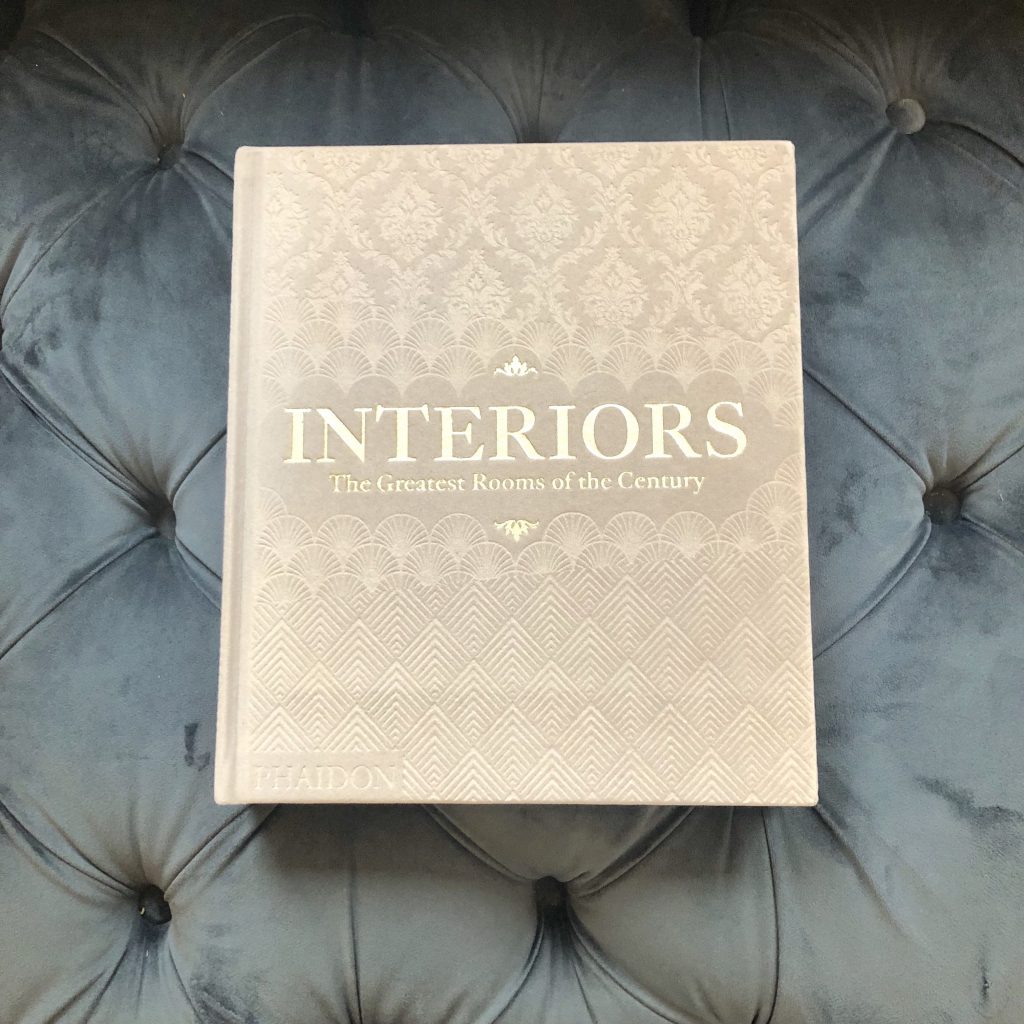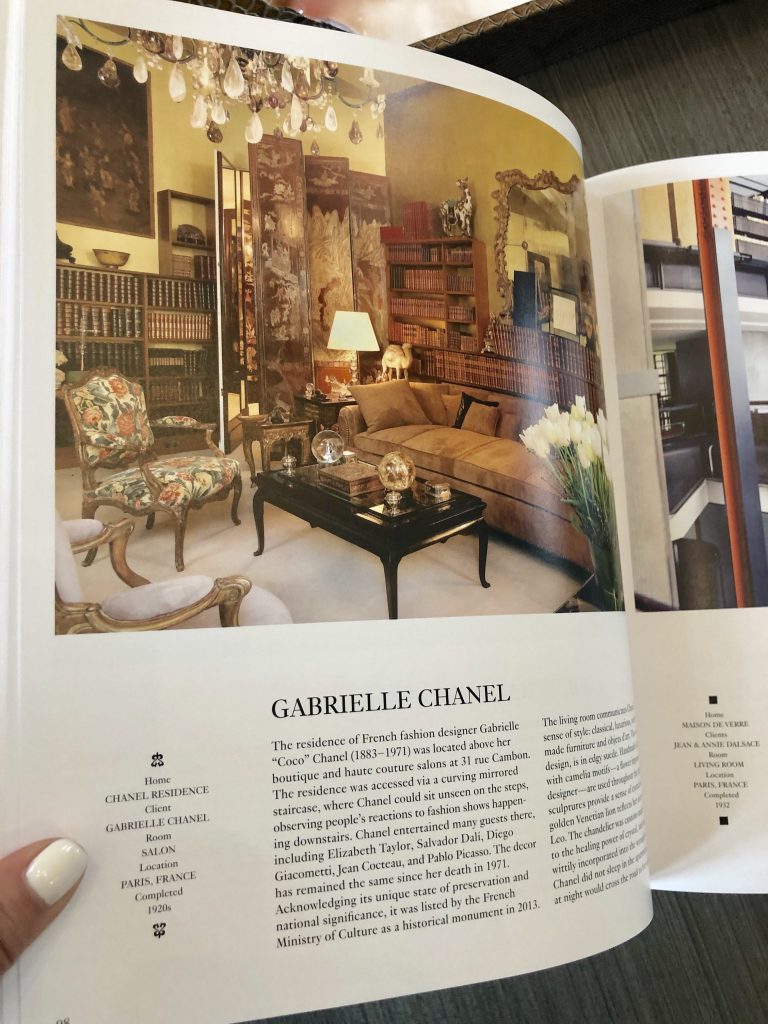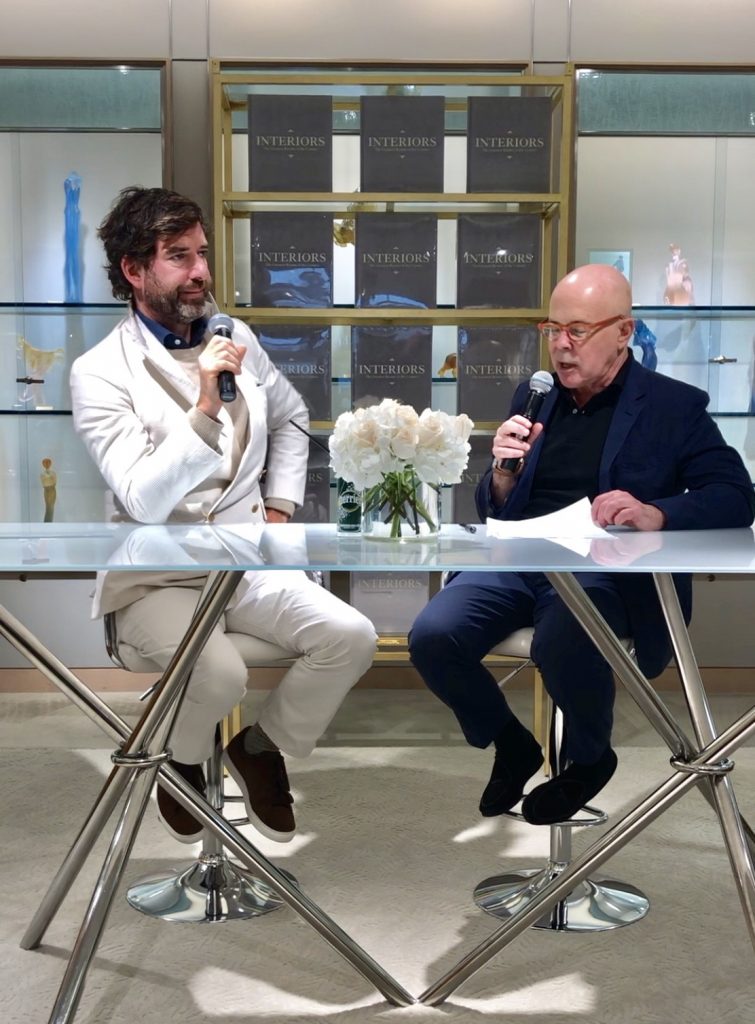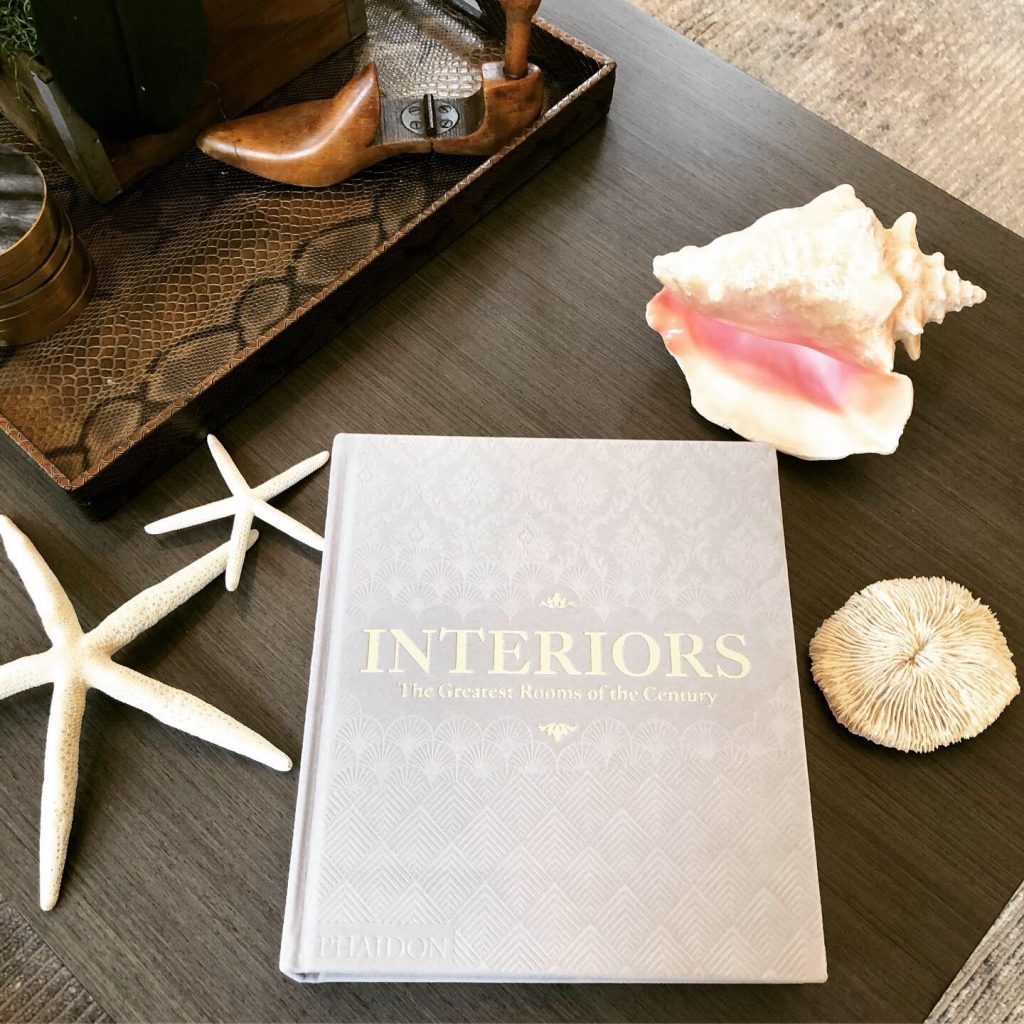Interiors: The Greatest Rooms of the Century available at Neiman Marcus Fashion Island.

Who knew Coco Chanel designed her own caramel hued suede sofa or that Gianni Versace had hand painted frescoes of palm fronds on his bedroom ceiling? Phaidon’s latest book, Interiors: The Greatest Rooms of the Century makes me feel like I’m a fly on the wall of some of the most amazing rooms. Brimming with design inspiration, it also reads like a who’s who in the world of interior design, fashion and art—and since it’s arranged in alphabetical order, it makes it easy to revisit favorites. From austere to opulent, simple to whimsical my favorite rooms were grand and plush—just like the platinum grey velvet Interiors book cover.

Q & A with William Norwich
Phaidon’s fashion and interiors commissioning editor William Norwich and interior designer David Netto were recently at Neiman Marcus Fashion Island to discuss the book. I had the chance to ask William Norwich veteran journalist and author some questions about his selection process, who didn’t make in the book and what he loves about his own home.

Sabrina Azadi: There are 400 amazing (and very different) rooms from around the world, featured in Interiors, tell us about your selection process?
William Norwich: Phaidon’s Interiors is a legacy project for us, following the A to Z formats of Phaidon’s The Art Book and The Fashion Book—books that range between 400 and 500 pages. My background, as a journalist, on newspapers and magazines, includes many years contributing and producing interior design stories for Vogue, House & Garden and The New York Times. The selection process for our book began with me squeezing my memory for the information I have learned about what are the interiors that interior designers, editors, photographers, and patrons talk about most when they talk about interior design’s best and most influential. With that list in place, I reached out to about three-dozen experts and asked for their suggestions.
SA: Who didn’t make the cut?
WN: In some cases the only reason something wasn’t included was because we couldn’t find a good quality enough hi-res image for the place, especially for rooms prior to WW II. I wish we could have found an image that held up for anything belonging to the Eugenie Errazuriz, the mentor to Picasso and Jean-Michel Frank. Her homes were design laboratories for some of the earliest rooms of elevated, sophisticated, luxurious minimalism.
SA: What can a lay-person—that’s perhaps an interior design enthusiast take away from this book?
WN: Hopefully ideas, inspiration, how they’d like to decorate a space. Everything from finding favorite colors to furniture to accessories—ideas.
SA: You were recently here at Fashion Island Neiman Marcus, along with L.A. based interior designer David Netto. Why did you choose Netto and what is it about his design aesthetic you admire?

WN: David Netto knows good design and he channels good design for his clients. He doesn’t have one “look,” he has understanding for how to make a client feel contented and delighted and “at home” in their homes. The other aspect of David that I am endlessly impressed by is his knowledge of the history of design and his talent to write about interior design and lifestyle in a lively, yet informed, way. He has written one of the three essays that appear in Phaidon’s Interiors.
SA: Tell us about where you live, your own living space and what you love about it?
WN: I live in a one-room penthouse studio in the East Sixties in Manhattan during the week. What I like about it is that it is uncluttered and minimal, easy to maintain, with a very welcoming bed and a very long white desk. There are books and a reddish rug; on weekends and any chance I get I am on Long Island in a house filled with favorite pieces and too many books. It probably looks like shabby meets university club meets Swedish early 20thcentury.
SA: Which is your favorite room in the book and why?
WN: Because I would like to avoid the impression I’m biased to any designers, I’ll answer by saying that my favorite room is the Paris living room of former interiors magazine editor turned textile and houseware designer Carolina Irving. It is cozy and colorful and filled with the things she loves and has collected over a lifetime of travel.
SA: Is there an overlap between the worlds of fashion and interior design (the book features the rooms of several fashion designers)? Do interior designers have a sense of style in the way they dress and are fashion designers often able to translate their sense of style onto the spaces they live in?
WN: I can’t think of many interior decorators, all are well dressed, but who actually take many risks with the clothes they wear. The majority will wear good-quality, well-made tailored clothing in subdued colors so as to not compete for attention with the visuals and materials they are working with in terms of décor. On the other hand, fashion designers do take risks with their décor. Fashion is change and it is in a fashion designer’s nature to want to change the look of something, try trends and colors.
SA: What’s the trick to making our interiors timeless yet Insta-ready?
WN: Authenticity. Live with what you love, arrange it in the most commodious way possible, and the authenticity will make it timeless–and also photogenic.

SA: What’s your favorite item of clothing and your favorite piece of furniture/item in your house and why?
WN: I don’t really have a favorite piece of clothing. I am fond of my eyeglasses, both the frames and the lenses because I can see! My eyesight needs a lot of help. My favorite piece is a decorative 20thcentury chair made of cherry wood covered in a rich faux leopard. The chair was bought at the estate sale of the late decorator David Barrett.
SA: What is good taste? Is it inherent or can it be learned?
WN: Good taste, to me, is about attaining a welcoming spirit in the home. It can be a minimal space or a maximal space but it’s the vibe one creates with both material and emotional means. Yes, it can be learned. If you learn to look and to love but if one never gets past keeping up with the Joneses, or the Kardashians, or anyone other than oneself, that’s not living that’s status seeking, competing, and it’s the bane of good taste–anything that negates authenticity.
Interiors: The Greatest Rooms of the Century is available at Neiman Marcus Fashion Island, $79.95.